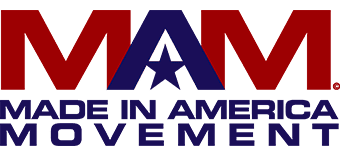SKILLS GAP ALERT: Fix Your Workforce Now
You’re facing a pressing skills gap that threatens your organization’s productivity and competitiveness. Start by conducting a skills gap analysis to pinpoint deficiencies. Use surveys and performance metrics to assess current capabilities. Compare these with the skills needed for future success. Prioritize targeted training initiatives to bridge gaps. Engage both team managers and HR in collaborative efforts. Implement regular assessments and leverage technology for continuous learning. This structured, data-driven approach will align your workforce with strategic goals and facilitate long-term success. Discover how to effectively tackle this issue with more actionable insights.
Key Takeaways
- Conduct a skills gap analysis to identify and prioritize deficiencies in your workforce.
- Implement targeted training programs to address critical skill gaps and enhance employee performance.
- Use performance metrics and surveys for a comprehensive assessment of current skill levels.
- Collaborate with HR and team managers to align workforce capabilities with organizational goals.
- Invest in continuous learning and leverage technology to keep employees updated with industry trends.
Understanding the Skills Gap
Understanding the skills gap starts with recognizing the disparity between your organization’s current workforce capabilities and the competencies needed to achieve its strategic goals. Tackling skills gap challenges requires identifying where your employees’ skills fall short. You’ll need to implement workforce readiness strategies that align with your mission to serve others effectively. Start by evaluating current skills through surveys and performance metrics. Then, benchmark these against the skills necessary for future success. By doing this, you can pinpoint exact deficiencies and prioritize training initiatives. Addressing these gaps guarantees your team is better prepared to meet evolving industry demands, thereby enhancing your organization’s overall competitiveness and ability to deliver exceptional service.
Importance of Skills Gap Analysis
A skills gap analysis is essential because it allows organizations to identify and address specific skill deficiencies, facilitating that their workforce is equipped to meet current and future demands effectively. By conducting a thorough training assessment, you can pinpoint areas needing skill enhancement, enabling you to tailor your development programs accurately. This proactive approach guarantees that your team stays competitive and aligned with industry trends. Analysis also provides a clear picture of your employees’ strengths and weaknesses, helping you make informed decisions about upskilling and reskilling initiatives. Ultimately, addressing these gaps not only boosts employee performance but also enhances overall organizational productivity, making your workforce resilient and future-ready.
Benefits of Conducting an Analysis
Conducting a skills gap analysis yields significant benefits, including improved employee engagement, enhanced organizational competitiveness, and increased productivity. By identifying the gaps between current and needed skills, you can tailor retention strategies that boost employee satisfaction and reduce turnover. This focused approach not only enhances performance but also fosters a culture of continuous improvement. When employees see their growth needs addressed, they feel valued and are more likely to stay. Additionally, a skills gap analysis equips you to adapt swiftly to market changes, ensuring your organization remains competitive and innovative. Ultimately, this data-driven method provides a roadmap for strategic workforce planning, maximizing ROI while nurturing a dedicated, skilled, and satisfied workforce.
Who Conducts the Analysis
To harness the full benefits of a skills gap analysis, it’s important to know who takes charge of conducting the evaluation. Typically, Team Managers and the HR Department play pivotal roles. Team Managers are best positioned to evaluate individual employee performances and team-level skills, offering valuable insights into specific strengths and weaknesses. Meanwhile, the HR Department focuses on the overall workforce, aligning skills with organizational goals and business objectives. This dual approach facilitates a thorough analysis, allowing you to address skill deficiencies effectively. By involving both parties, you can create targeted training programs, enhance employee performance, and support strategic workforce planning. This collaborative effort is essential for fostering a competitive and adaptive workforce.
Steps for a Skills Gap Analysis
Start your skills gap analysis by identifying key performance indicators (KPIs) and the desired skills necessary to achieve your business objectives. Begin by analyzing outcomes to understand where your current workforce stands and where improvements are needed. Evaluate current skills through surveys, interviews, and performance metrics. Compare these findings with your KPIs to pinpoint gaps. Prioritize these gaps based on their impact on your goals. Next, develop skill development strategies tailored to address the most critical deficiencies. Establish your plan includes training programs, workshops, and mentorship opportunities. By systematically following these steps, you’ll create a precise roadmap for enhancing your team’s capabilities, guaranteeing they’re well-equipped to serve others effectively and drive your organization forward.
Effective Methods for Assessment
Effective methods for assessment involve leveraging surveys, self-assessments, and performance metrics to gather robust data on employees’ current skillsets. Utilize these assessment techniques to pinpoint strengths and areas needing improvement. Surveys can quickly collect broad data, while self-assessments let employees provide personal insights. Performance metrics offer objective measures of skill application in real-world tasks.
To implement effective improvement strategies, combine these methods for a thorough view. This holistic approach confirms you’re identifying true skill gaps and addressing them efficiently. Remember, your goal is to enhance employee performance and satisfaction, ultimately driving organizational success. By focusing on accurate assessment techniques, you’ll create targeted, impactful improvement strategies that foster a thriving, skillful workforce committed to serving others.
Addressing Identified Skill Gaps
Addressing identified skill gaps requires a multifaceted approach that combines targeted training, strategic hiring, and selective outsourcing to guarantee your workforce stays competitive and adaptable. Implement effective training strategies to bridge gaps, leveraging one-on-one coaching, course authoring tools, and engaging content creation. For skills that are challenging to develop internally, consider strategic hiring to bring in fresh talent with the necessary expertise. Additionally, outsourcing specific skills that aren’t required year-round or are project-based can optimize your resources. By using a data-driven approach, you can prioritize workforce improvement efforts based on business objectives, ensuring each step aligns with your mission to serve others better. This holistic strategy will enhance productivity, innovation, and employee satisfaction.
Best Practices for Workforce Development
Consistently implementing best practices for workforce development guarantees your organization remains agile, competitive, and well-prepared for future challenges. To excel, focus on robust training strategies and targeted skill development. Here are three essential steps:
- Conduct Regular Skills Assessments: Use data-driven methods to identify gaps and tailor training strategies.
- Invest in Continuous Learning: Promote a culture where ongoing skill development is valued, ensuring employees stay updated with industry trends.
- Leverage Technology for Training: Utilize e-learning platforms and interactive tools to deliver engaging and effective training programs.
Conclusion
Don’t let your workforce sail into the storm of obsolescence. By conducting a skills gap analysis, you’re not just plugging holes but fortifying the ship for future voyages. This data-driven approach guides you to tailor training programs that boost productivity and innovation. Embrace this proactive strategy to keep your team aligned with industry trends, enhance engagement, and secure your competitive edge. Now’s the time to act and tap your workforce’s full potential.





Leave a Reply
Want to join the discussion?Feel free to contribute!